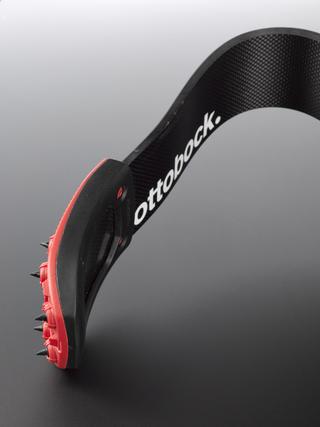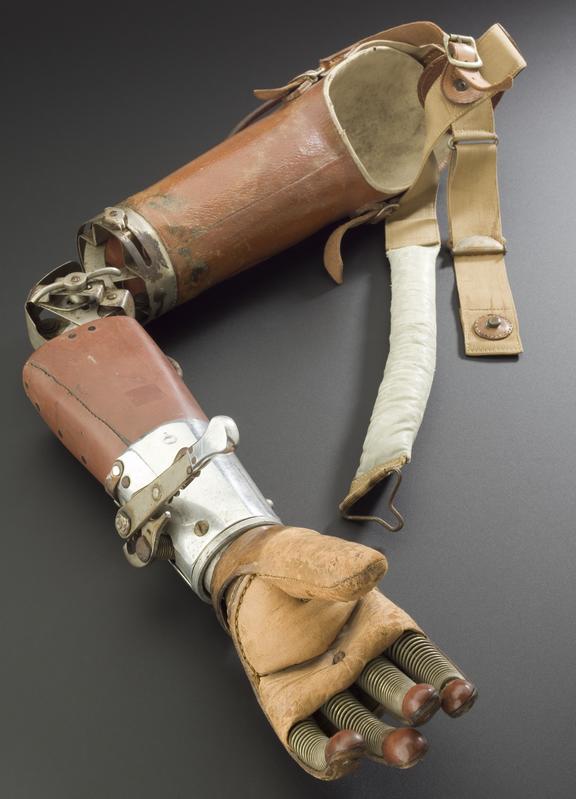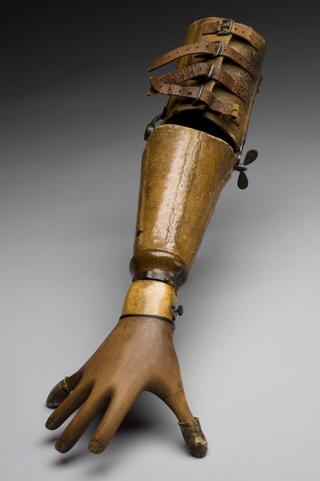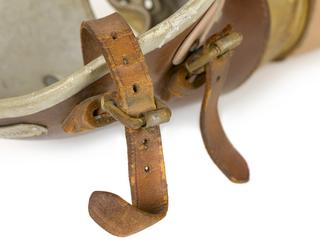
'P & K' artificial left arm, Belfast, Northern Ireland, 1920-1925
- Made:
- 1920-1925 in Belfast and Northern Ireland








Above elbow prosthesis with a leather socket, fibre forearm, heavy metal wrist unit with long lever to operate the flexion and extension of the fingers, by P and K Artificial Limb Co., Belfast, Northern Ireland, 1920-1925. Pringle & Kirk prostheses were made in the North of England for agricultural workers.
Artificial arm invented by T Kirk and Alexander Pringle, and manufactured by the P & K Artificial Limb Company, Belfast, Ireland, c.1920-1925. Known as the P-K arm, the design allowed the wearer to grip with the fingers, which were made of steel springs, by means of a lever set above the wrist and operated by the wearers other hand.
Details
- Category:
- Orthopaedics
- Object Number:
- 1999-519
- Materials:
- aluminium alloy, brass (copper, zinc alloy), copper (alloy), steel (metal), tin (metal), cotton (fibre), cotton (textile) and leather
- Measurements:
-
overall (lying flat [see attached Media Images]): 150 mm x 780 mm x 340 mm,
- type:
- artificial arm
- credit:
- Richmond Twickenham and Roehampton Healthcare NHS Trust




